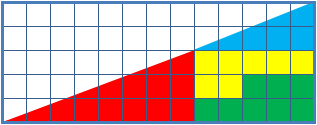The missing square puzzle is an optical illusion found in mathematics that is used to teach reasoning using the axioms of geometry and textual descriptions rather than simply relying on geometric figures. The puzzle consists of two right triangles with dimensions 13×5, but one of the triangles has a hollow 1×1 square.
Here, we will learn about the solution to this puzzle.
Missing square puzzle
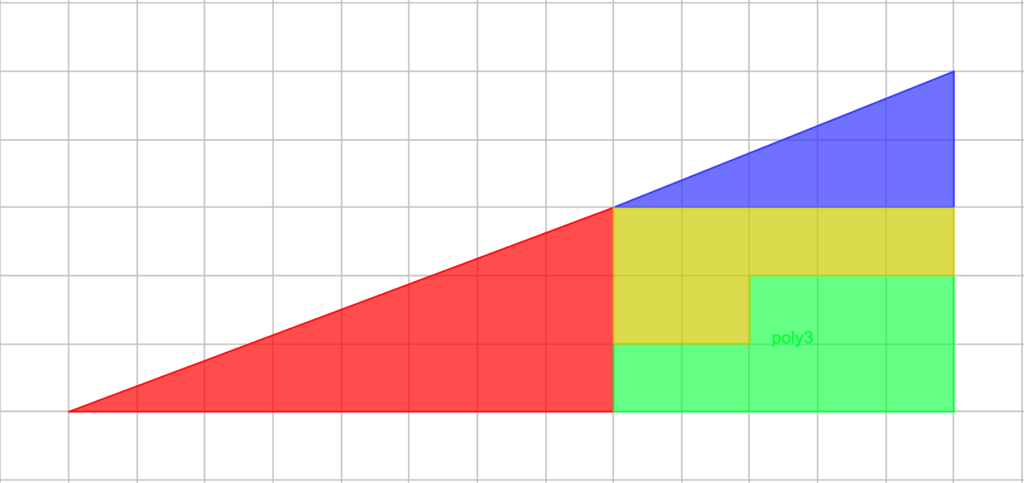
In the image above we have a triangle with dimensions 13×5 that is formed by 4 polygons. If we rearrange the polygons, we obtain the following figure:
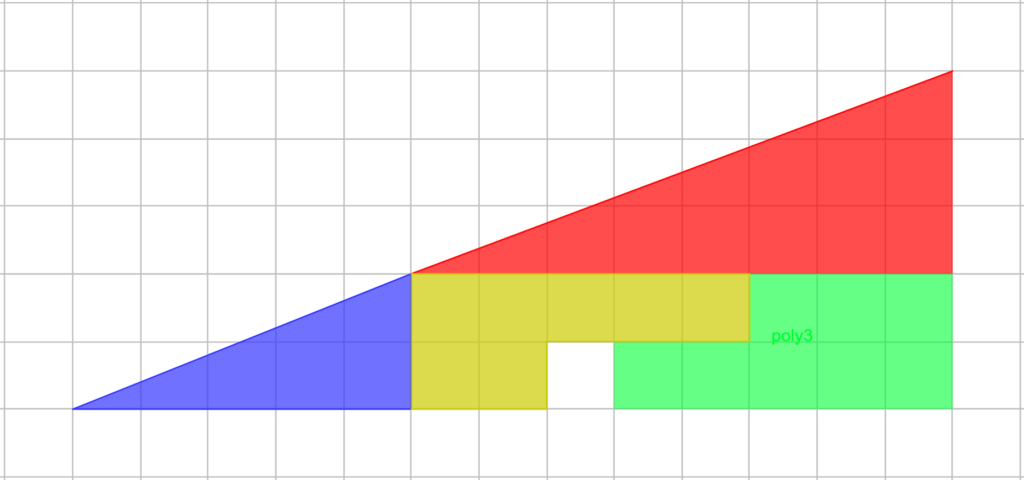
Both figures are formed by the same 4 polygons, but we can see that the second figure has a 1×1 square missing.
Both figures have a height of 5 units and a base of 15. The area of a triangle can be calculated using the formula A=1/2 bh, where b is the length of the base and h is the height of the triangle. Therefore, we have:
A = 1/2×13×5 = 32.5
Solution to the missing square puzzle
To find the solution to this puzzle, we can start by determining the area of each of the polygons that make up the following figure:

The areas of the triangles can be calculated using A=1/2 bh and the areas of the other figures can be calculated by dividing them into rectangles or simply by counting the number of squares in each figure.
The area of the blue triangle is 1/2×5×2 = 5.
The area of the red triangle is 1/2×8×3 = 12.
The area of the yellow polygon is 7.
The area of the green polygon is 8.
The total area of these figures is 32. Note that this is less than the area of the triangle with dimensions 13×5. The area of all the polygons in the figure above equals 32, however the area of the triangle with dimensions 13×5 is 32.5. This tells us that we are making a mistake somewhere since the area of the figures cannot change out of nowhere.
Now, we are going to calculate the slopes of the hypotenuses of the blue and red triangles separately and then add them together.
The height of the red triangle is 3 and the length of its base is 8, so the slope of the red triangle is 3/8.
The height of the blue triangle is 2 and the length of its base is 5, so the slope of the blue triangle is 2/5.
Adding these slopes, we have 3/8+2/5 = 31/40.
The slopes of the blue and red triangles are not the same. This means that the hypotenuse of the figure is not a straight line, which means that the figures are not triangles. Figure 1 has a slope that is curved slightly inward and Figure 2 has a slope that is slightly curved outward. When comparing these figures, we see that the hypotenuses do not match.
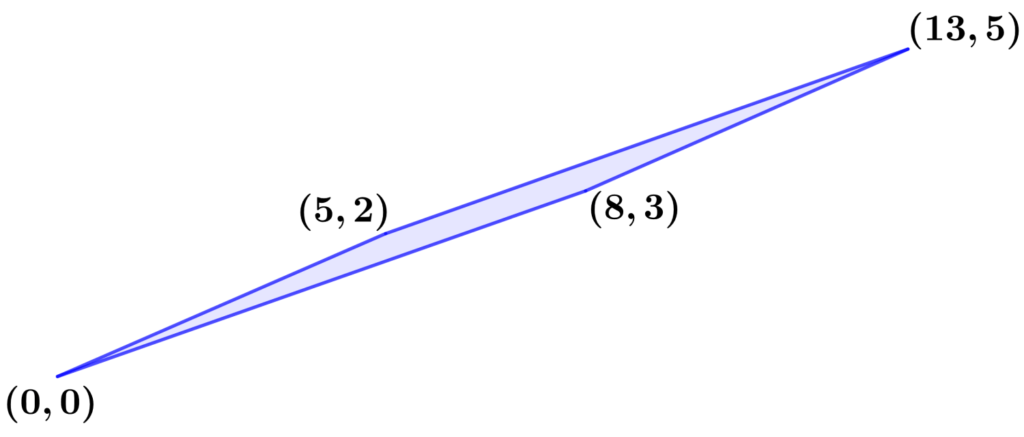
Missing square puzzle and Fibonacci numbers
We saw that none of the figures is actually a triangle and the difference between their areas is exactly 1.
We can make the observation that the lengths of the sides of the polygons that form the figures, 2, 3, 5, and 8, are successive Fibonacci numbers.
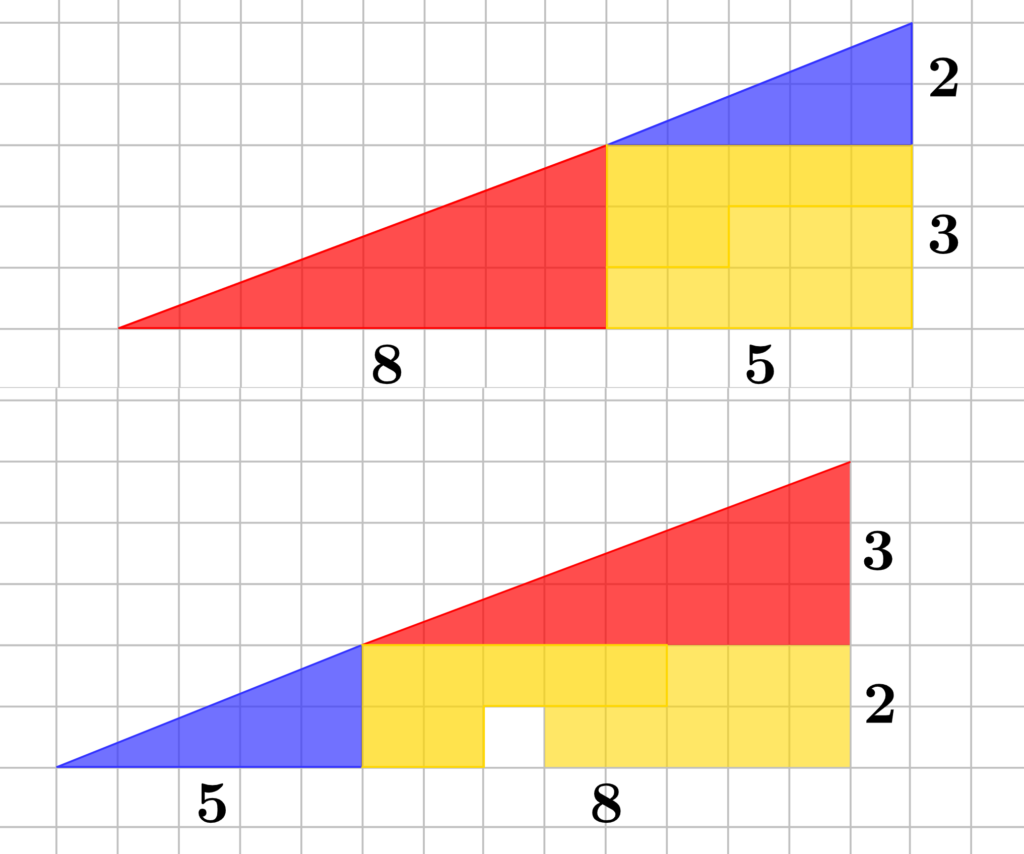
It turns out that we can recreate the missing square puzzle by using any 4 consecutive Fibonacci numbers to construct the triangles in an analogous way. For example, in the figures below we have the Fibonacci numbers 1, 1, 2, 3. We can rearrange the rectangle to create a hole of area 1.
However, this time, the illusion is less convincing as the slopes are notoriously different.

See also
Interested in learning more about similar figures, congruency, and other geometry topics? Take a look at these pages:

